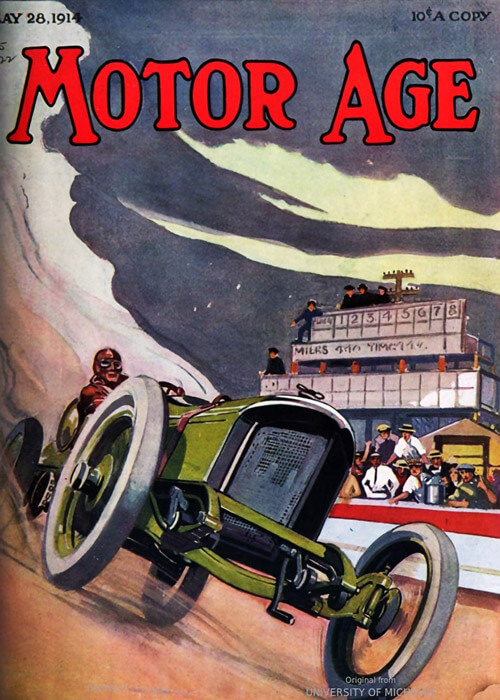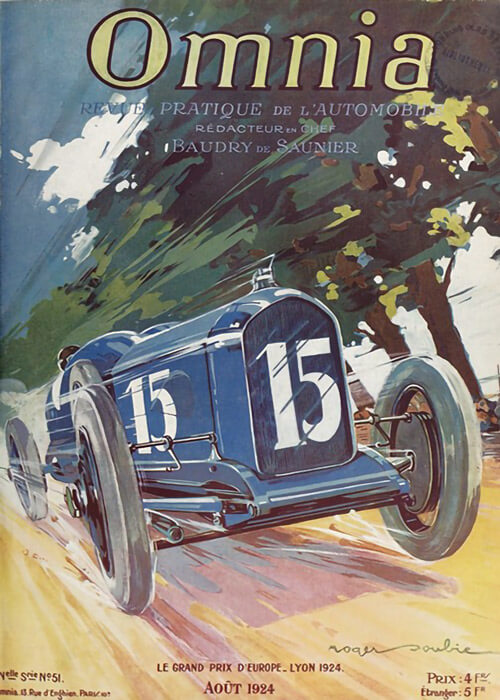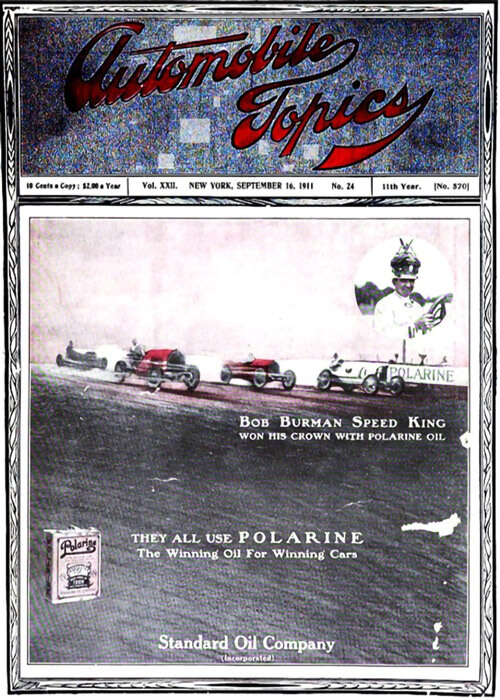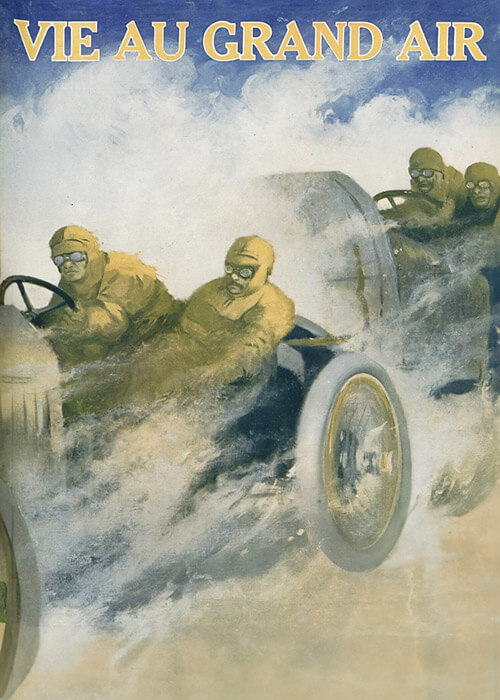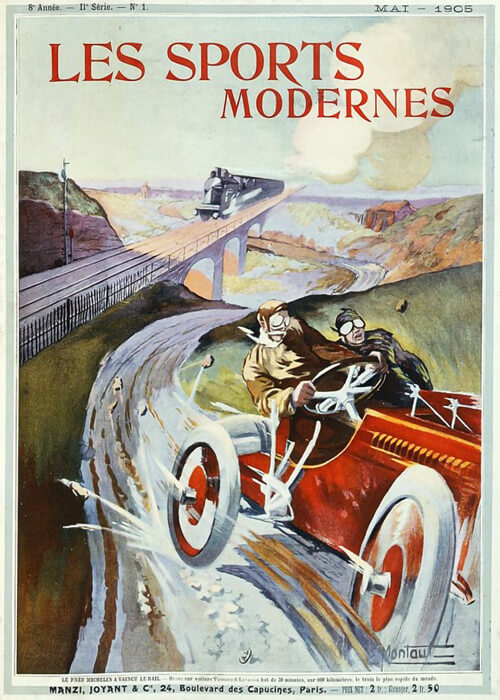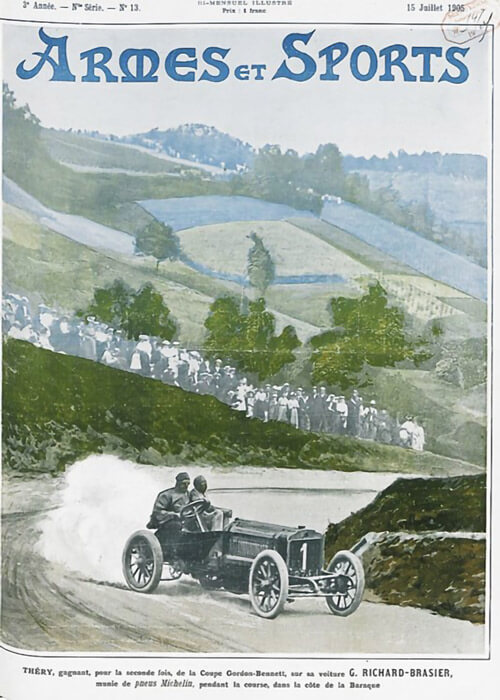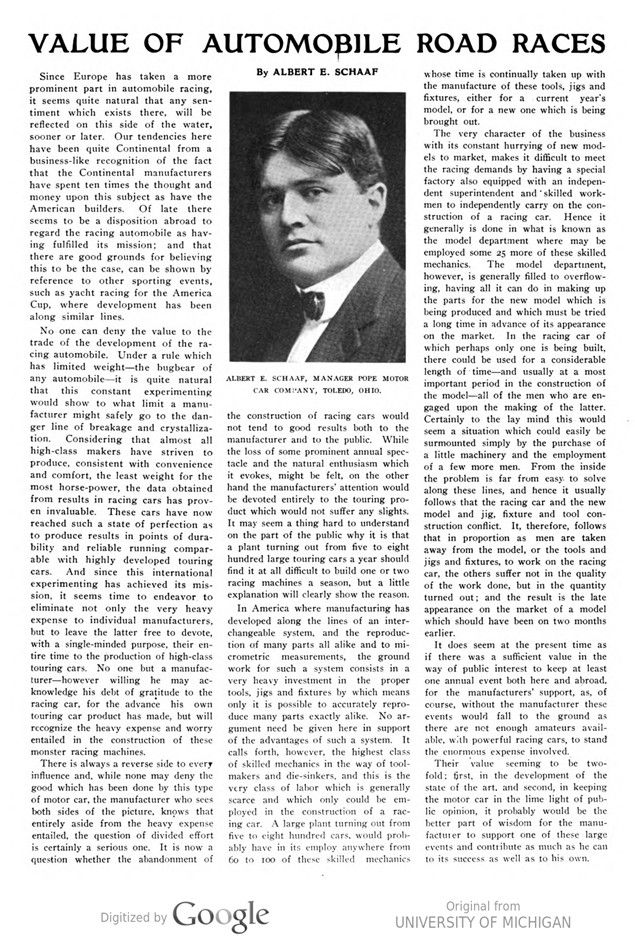
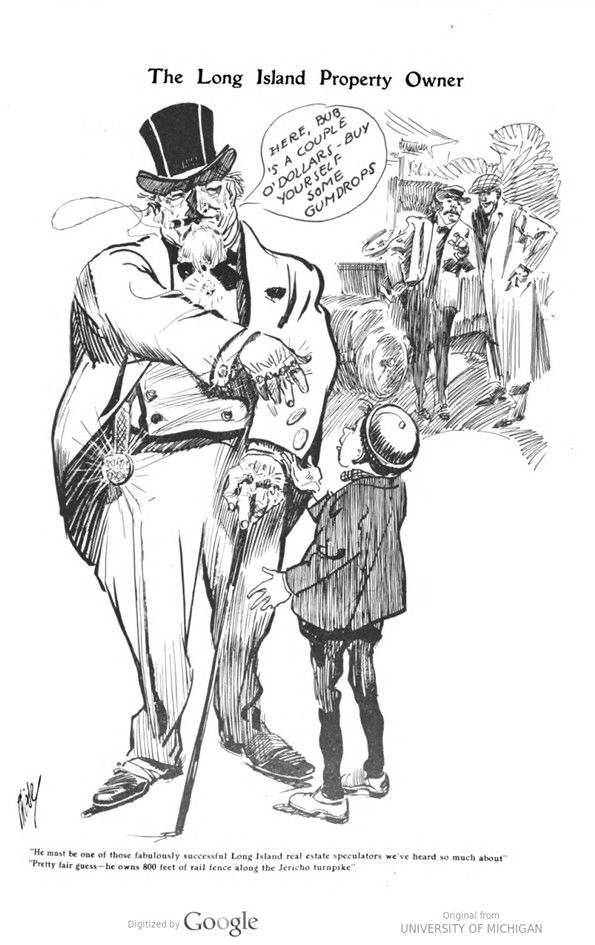
Text and jpegs by courtesy of hathitrust.org www.hathitrust.org, compiled by motorracinghistory.com
THE MOTOR WAY Vol. XV, No. 14 October 4, 1906, page 9
VALUE OF AUTOMOBILE ROAD RACES
By ALBERT E. SCHAAF ALBERT E. SCHAAF, MANAGER POPE MOTOR CAR COMPANY, TOLEDO, OHIO.
Since Europe has taken a more prominent part in automobile racing, it seems quite natural that any sentiment which exists there, will be reflected on this side of the water, sooner or later. Our tendencies here have been quite Continental from a business-like recognition of the fact that the Continental manufacturers have spent ten times the thought and money upon this subject as have the American builders. Of late there seems to be a disposition abroad to regard the racing automobile as having fulfilled its mission; and that there are good grounds for believing this to be the case, can be shown by reference to other sporting events, such as yacht racing for the America Cup, where development has been along similar lines.
No one can deny the value to the trade of the development of the racing automobile. Under a rule which has limited weight – the bugbear of any automobile – it is quite natural that this constant experimenting would show to what limit a manufacturer might safely go to the danger line of breakage and crystallization. Considering that almost all high-class makers have striven to produce, consistent with convenience and comfort, the least weight for the most horse-power, the data obtained from results in racing cars has proven invaluable. These cars have now reached such a state of perfection as to produce results in points of durability and reliable running comparable with highly developed touring cars. And since this international experimenting has achieved its mission, it seems time to endeavor to eliminate not only the very heavy expense to individual manufacturers, but to leave the latter free to devote, with a single-minded purpose, their entire time to the production of high-class touring cars. No one but a manufacturer – however willing he may acknowledge his debt of gratitude to the racing car, for the advance his own touring car product has made but will recognize the heavy expense and worry entailed in the construction of these monster racing machines.
There is always a reverse side to every influence and, while none may deny the good which has been done by this type of motor car, the manufacturer who sees both sides of the picture, knows that entirely aside from the heavy expense entailed, the question of divided effort is certainly a serious one. It is now a question whether the abandonment of the construction of racing cars would not tend to good results both to the manufacturer and to the public. While the loss of some prominent annual spectacle and the natural enthusiasm which it evokes, might be felt, on the other hand the manufacturers‘ attention would be devoted entirely to the touring product which would not suffer any slights. It may seem a thing hard to understand on the part of the public why it is that a plant turning out from five to eight hundred large touring cars a year should find it at all difficult to build one or two racing machines a season, but a little explanation will clearly show the reason.
In America, where manufacturing has developed along the lines of an inter- changeable system, and the reproduction of many parts all alike and to micrometric measurements, the groundwork for such a system consists in a very heavy investment in the proper tools, jigs and fixtures by which means only it is possible to accurately reproduce many parts exactly alike. No argument need be given here in support of the advantages of such a system. It calls forth, however, the highest class of skilled mechanics in the way of tool-makers and die-sinkers, and this is the very class of labor which is generally scarce and which only could be employed in the construction of a racing car. A large plant turning out from five to eight hundred cars, would probably have in its employ anywhere from 60 to 100 of these skilled mechanics whose time is continually taken up with the manufacture of these tools, jigs and fixtures, either for a current year’s model, or for a new one which is being brought out.
The very character of the business with its constant hurrying of new models to market, makes it difficult to meet the racing demands by having a special factory also equipped with an independent superintendent and skilled work- men to independently carry on the construction of a racing car. Hence it generally is done in what is known as the model department where may be employed some 25 more of these skilled mechanics. The model department, however, is generally filled to overflowing, having all it can do in making up the parts for the new model which is being produced and which must be tried a long time in advance of its appearance on the market. In the racing car of which perhaps only one is being built, there could be used for a considerable length of time-and usually at a most important period in the construction of the model-all of the men who are engaged upon the making of the latter. Certainly, to the lay mind this would seem a situation which could easily be surmounted simply by the purchase of a little machinery and the employment of a few more men. From the inside the problem is far from easy to solve along these lines, and hence it usually follows that the racing car and the new model and jig, fixture and tool construction conflict. It, therefore, follows that in proportion as men are taken away from the model, or the tools and jigs and fixtures, to work on the racing car, the others suffer not in the quality of the work done, but in the quantity turned out; and the result is the late appearance on the market of a model which should have been on two months earlier.
It does seem at the present time as if there was a sufficient value in the way of public interest to keep at least one annual event both here and abroad. for the manufacturers‘ support, as, of course, without the manufacturer these events would fall to the ground as there are not enough amateurs available, with powerful racing cars, to stand the enormous expense involved.
Their value seeming to be two-fold: first, in the development of the state of the art, and second, in keeping the motor car in the limelight of public opinion, it probably would be the better part of wisdom for the manufacturer to support one of these large events and contribute as much as he can to its success as well as to his own.
The Long Island Property Owner
HERE, BUB’S A COUPLE O’DOLLARS – BUY YOURSELF SOME GUMDROPS
„He must be one of those fabulously successful Long Island real estate speculators we’ve heard so much about“ „Pretty fair guess-he owns 800 feet of rail fence along the Jericho turnpike“
